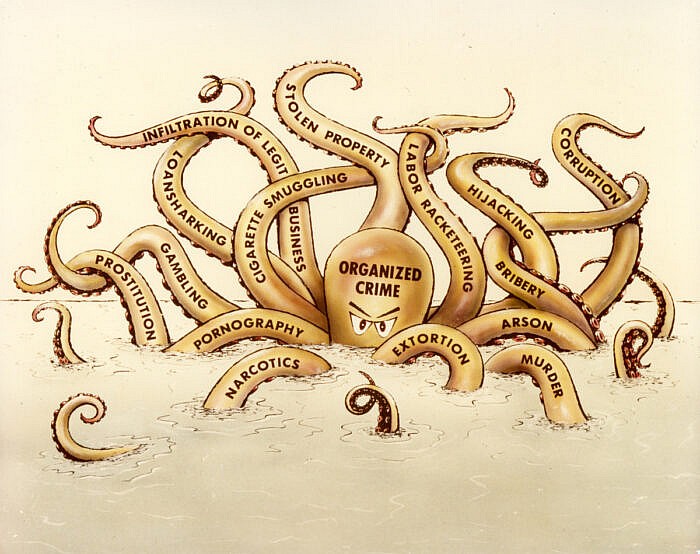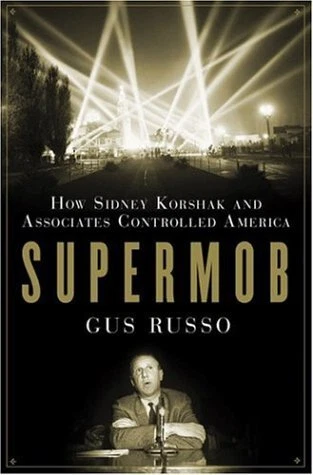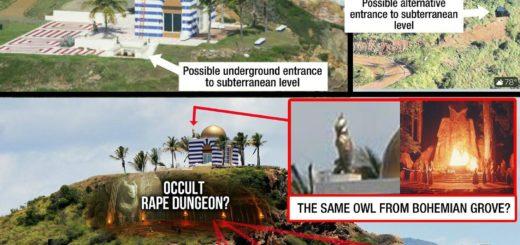Proof of Massive Racism Against Japanese in America & How Their Lives Were Ruined or Slimy Mob Lawyer Sidney Korshak Leaves His LegacyBy Korshak, Criminal & Lawyer
Like all other Asians, California’s ethnic Japanese population had long suffered under the harshest sort of racial discrimination, being denied naturalized citizenship and therefore prohibited from owning land, while nearly all additional immigration from their homeland had been banned in the 1920s. Yet although they had arrived as penniless farm laborers mostly around the turn of the century, their intense work-ethnic and diligent savings had established them as a small but reasonably prosperous community by the late 1930s. The Fourteenth Amendment granted citizenship to their American-born children, thus allowing their families to eventually acquire large amounts of farmland and other properties, with their visible success sometimes provoking considerable envy from their white neighbors and competitors.
As I have discussed elsewhere, FDR’s desperate attempt to circumvent overwhelming public opposition to America’s involvement in World War II eventually led to his endless 1941 provocations against Japan, which successfully culminated in the attack on Pearl Harbor.
Soon afterward, demagogic appeals by politicians and media pundits led much of the public to begin demanding the incarceration of all ethnic Japanese, U.S. citizens or not, and by early 1942 FDR signed an executive order shipping some 120,000 Japanese-Americans off to grim concentration camps, with those individuals sometimes being forced to leave their homes on very short notice. As a result, they lost nearly all the property they had steadily accumulated over two generations, most of which was either seized or otherwise ended up in government hands. Similar government edicts led to the confiscation of numerous German-owned businesses throughout America, many of which had enormously valuable assets.
Within a couple of years, these federal holdings had swelled to include half a million acres of the state’s best farmland, some 1,265 small Japanese-owned hotels, and numerous urban parcels throughout Los Angeles, San Jose, and other cities. In 1942 the federal government estimated the value of these former Japanese-American properties at around $3 billion in present day dollars, but the huge postwar California economic and population boom would surely have greatly increased the worth of this real estate portfolio by the early 1950s. The business assets and patent holdings of the seized German companies were worth additional billions.
Following the end of the war, all this property needed to be sold off, and powerful Chicago interests recognized this tremendous opportunity. The 1946 elections had produced a crushing national defeat for the ruling Democrats, with the Republicans regaining control of both houses of Congress for the first time since 1932.
President Truman thus faced a desperate battle for reelection, and Chicago’s powerful political machine deployed its considerable political clout to place the sales process in the hands of David L. Bazelon, a young Chicago lawyer and leading Democratic fund-raiser with deep Syndicate ties. Bazelon had taken a pay cut of 80% to enter government service, but he soon boasted to the Washington Post that he had become “one of the largest businessmen in the country.” His motive quickly became apparent as he arranged the sale of assets for a fraction of their real value to his circle of Chicago friends and associates, sometimes apparently receiving a secret slice of the lucrative ownership stakes in return.
As an extreme example, Bazelon almost immediately sold Chicago’s Henry Crown a twenty-six thousand acre California mine site, containing tens of millions of dollars worth of coal, for a mere $150,000. A private $1 million sale of seized German property in 1948 to a group formed by his lifelong best friend and former law partner Paul Ziffren was worth $40 million by 1954, and Ziffren soon rewarded Bazelon with a 9.2% share of his multimillion-dollar real estate holding company. Another major beneficiary of Bazelon’s unusual sales practices later told a Congressional investigating committee that he gave Bazelon a 25% share of his large hotel holding company because he “was just feeling good and generous and was grateful.”
These particular hidden gifts to Bazelon only later came to light through chance references that were eventually uncovered by diligent researchers, so we may assume that such transactions probably represented just the tip of an enormous iceberg. It seems plausible that Bazelon received quiet kickbacks totaling many millions or perhaps even tens of millions in present-day dollars in exchange for his very favorable distribution of billions in government assets to the network of beneficiaries who shared his roots in the Chicago Syndicate.
This vast transfer of wealth in the early postwar years from the plundered Nisei gave all these mobbed-up Chicago newcomers the financial wherewithal to soon gain substantial control of California’s money-based political system. As Art White, the veteran Los Angeles political journalist, later described the situation:
During these years some hundreds of associates of Greenberg, Evans, and others of the Capone crime syndicate, and of Arvey and Ziffren, poured hundreds of millions of dollars into California. They bought real estate, including hotel chains through apparently unrelated corporations from San Diego to Sacramento. They invested in vast tracts of land, built or bought motels, giant office buildings, and other commercial properties. More importantly, they invaded the loan field, establishing banks and home loan institutions. By 1953, Ziffren and his associates had gained control of an enormous block of California’s economy. They could finance political campaigns with the best of the native barons.
Russo notes that the FBI analysts subsequently endorsed White’s conclusions:
When the FBI reviewed White’s research into the extent of the relationship between the Capones and Ziffren, it concluded with a rare declaration vindicating White’s conclusions: “The extraordinary success of the adventurer [Ziffren]—and by the same token his backs, who can be traced right into the Midwest and East Coast hoodlum world—has been proven and documented. (Author’s italics).
Russo’s Appendix A provides a long but partial list of the major properties acquired by Chicago’s Supermob associates.
The dispossession of California’s Japanese-Americans certainly constituted a central factor in the enormous growth of Syndicate-connected wealth and power in that state, and Russo describes it as “an inadvertent boost for the fortunes of the Supermob.” He may be entirely correct, but other possibilities come to mind.
During World War II, California was located many thousands of miles from the Pacific theater of operations, while Hawaii was obviously far closer and also served as America’s most vital military base; yet the larger population of Japanese-Americans living on those islands escaped any such mass incarceration. America’s top Republican leader, Sen. Robert Taft, was absolutely opposed to the wholesale imprisonment of the Japanese-Americans, as was FBI Director J. Edgar Hoover, hardly a man noted for his deep civil libertarian tendencies.
Meanwhile, the earliest and most prominent advocate of the internment policy was California Attorney-General Earl Warren, who used the political issue with great effectiveness to unseat the state’s incumbent Democratic governor in the 1942 election. And we should note that Warren’s successful gubernatorial campaign was masterminded by Chotiner, a Beverly Hills attorney with strong underworld connections, who later became a good friend and sometime business partner of Korshak and the other members of the Chicago Syndicate circle.
Comment: The Jewish Mafia screw the Japanese AGAIN!!! The lawsuit settlement for this theft was ANOTHER THEFT =pennies on the Dollar!
Perhaps Warren and his backers merely believed that demonizing a small and powerless racial minority and demanding that they be placed behind barbed wire would represent an excellent path to statewide political victory in the aftermath of Pearl Harbor. But they may also have considered that the concurrent seizure of billions in accumulated property might provide lucrative later opportunities for unscrupulous individuals, opportunities that were indeed fully realized just a few years later.
Bazelon’s secret financial payoffs were not the only reward he received for his generous distribution of billions in government-controlled property to his circle of fellow Capone Syndicate alumni. According to the files of a Congressional committee, Bazelon in 1946 had supposedly told a confident that he was very worried about an IRS investigation into the work he had earlier done for a large Syndicate-controlled brewing company, and that he “needed a federal judgeship to get him cleaned up.” So after Truman’s reelection, Bazelon, despite completely lacking any judicial or scholarly experience, was named to the Washington D.C. Court of Appeals, the most important appellate circuit, becoming at age forty the youngest such federal judge in U.S. history. This elevation came through the maneuver of a recess appointment, thereby preventing any initial Congressional review of the disturbing rumors already circulating about the practices he had followed in his distribution of billions in government assets. Comment: Simply put the most Corrupted Are Given Plum Jobs.
Former FDR cabinet secretary Harold Ickes, a principled and progressive New Dealer, reacted with total outrage, denouncing the Bazelon appointment as “deplorable” and an “all-time low” in the pages of The New Republic, and calling for a Senate investigation into his distribution of seized property. As a former Chicago newsman, Ickes had been a longtime opponent of the Capone Syndicate and its corruption, and he personally wrote Truman in an unsuccessful last-ditch attempt to sink the nomination: “I happen to know a good deal about Bazelon and I consider him to be thoroughly unfit for the job he holds, to say nothing of a United States judgeship, either on the Court of Appeals or on the District Court.”
Until reading these books by Russo, I had never heard of Korshak, nor the vast majority of the other leading figures who seemed to have played such important roles in the criminal conquest of California, such as Ziffren, Greenberg, Fred Evans, Al Hart, and Jake Factor. But Bazelon was a name well known to me from the nearly two decades he later spent as the Chief Judge of America’s most important appellate court, where he probably established himself as the most influential jurist not found on the Supreme Court. Indeed, Supreme Court Justice William J. Brennan, Jr. later described him as “one of the most important judicial figures of the century.”
In all the newspaper and magazine articles discussing Bazelon’s long career, he was uniformly portrayed in extremely favorable terms by liberal or mainstream journalists, often characterized as one of our greatest civil libertarians for his passionate championship of the abused and the downtrodden. Meanwhile, conservatives often criticized him as a “bleeding-heart liberal” whose judicial activism overly favored the rights of criminals and the mentally ill. Comment: He worked for the Jewish Mafia which wants our cities overrun with criminals and favors baby rapers & Murderers.
But based upon the true history of his early decades, neither of these characterizations seems entirely plausible to me, and during all those years and contentious disputes, there never once appeared even a hint of his horrific past record of massive personal corruption and outright criminality in support of his fellow alumni of the Capone Syndicate. Perhaps none of these writers and their editors were aware of the facts or perhaps they did not dare raise such a dangerous topic in public. When he died in 1993 at the age of 83, his hugely glowing obituaries in The New York Times and The Washington Post gave no hint of his sordid past, and despite the massive documentation provided in Russo’s thick 2006 volume, his extensive personal Wikipedia page still remains pristine pure of any such taint.
As Russo notes with considerable outrage, the histories of nearly all of Bazelon’s fellow Supermob criminal confederates who seized political control of California have similarly been whitewashed and forgotten, with almost none of their sordid path to wealth and power ever appearing in the media, and their glowing obituaries instead hailing them as among America’s greatest civil libertarians and most generous philanthropists. In an interview with Russo, Connie Carlson, the former chief white-collar crime investigator for California’s Attorney-General, acidly noted: “Isn’t it interesting how all these ‘civil libertarians’ ended up with the confiscated Japanese land?”
https://prepareforchange.net/2019/07/28/jews-not-italians-dominated-american-organized-crime-which-was-far-more-powerful-than-people-realize/
Pictured Sidney Korshak who destroyed the lives of hundred of thousands of Japanese immigrants.
The Thief Sidney Korshak:
FBI man Bill Roemer considered Korshak to have been nothing less than “the most important contact that the Mob had to legitimate business, labour, Hollywood and Las Vegas”. And Nick Toshes described him as “one of the great hidden figures of 20th Century organized crime”.
Attorney Sydney Korshak was thought by many to be the most powerful man in Hollywood for the last half Century. Until his death he remained an impeccably dressed enigma whose power reached deep into the lives of Jimmy Hoffa, Frank Sinatra, Lew Wasserman and Ronald Reagan.

Watch the film here:















